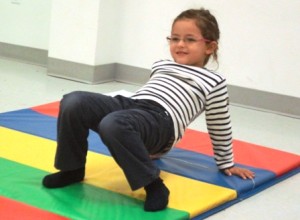LET’S HAVE FUN AND FOCUS!
Classroom strategies for kids that have trouble concentrating
“Sit Still and Concentrate!” A common oxymoron for kids who love to move or just can’t seem to focus and complete tasks. It could be that how their brain interprets sensory information is just a bit different to most of their peers. We ALL have different thresholds for different stimuli (those who bite their nails, those who hate loud music, those who like spicy food and those who are just more active than others) however sometimes it interferes with our ability to PARTICIPATE, LEARN and ENJOY things that some of us may take for granted. This is when we may need to learn strategies or have other people help us to regulate our environment and behaviours.
Kids can have a HIGH threshold (a term often used when talking about sensory integration) for movement or other sensory input (taste/smell, touch, visual or auditory information) which means that what may feel like a lot of stimulus to most kids, feels like a little for them. These kids may then come across under-stimulated (or flat) or be constantly “on the go” or “seeking” stimuli to try and reach their higher optimal threshold. For example; Some of these kids might mouth things, make noises, be constantly fidgeting, be overly physical with other kids or not notice when their name is called. Seeking out extra stimuli is their way of getting enough so that they feel “calm” or better equipped to focus.
While we are talking about this, we mustn’t forget the kids with a LOWER threshold for sensory information which means that what feels like a little to most kids, feels like a lot to someone with a low threshold or “sensitivities.” For example; Some of these kids may be sensitive to sound, react negatively when touched, hate wearing socks, be fearful of heights/movement or be very distracted by things in their field of vision.
Do we fit into one category or the other? In my experience, not usually. We often fit somewhere along a huge spectrum of what our brain tells us we do/don’t need and it can also change depending on a variety of factors (environment, diet, mood, sleep, anxiety, time of the day and even the weather!). Sometimes our brain just doesn’t MODULATE information well and we get confused with what the useful information is and which information can be filtered out.
I have complied a list (fun and focus handout ) of strategies that many children find help them to focus, sit still, calm down or engage better with their peers. I have attached photos with each strategy to provide a nice visual for teachers and parents who like me, hate long typed lists.
CONCENTRATING more in class is one goal area for a lot of families and one of the first recommendations I give to families is to start trying different weird and wonderful strategies and to note which ones “change” the child’s level of arousal (some may be calming, some may make us more alert). It is important to EVALUATE which strategies actually make a difference for your child otherwise it can just become a waste of time for everyone (particularly teachers who often are the ones trying to implement the strategies in a class of 20+ students). Teachers are usually super keen to help and obviously want the most out of your child too, however spending hours on things that just don’t make a difference aren’t high on anyone’s priority list. So have good COMMUNICATION and discuss with your child’s teacher which strategies are plausible and maybe try just 1 or 2 a week. Be as SUPPORTIVE and understanding as you can and provide the teacher with all the materials needed if they are happy to give something a shot.
 Picture courtesy of: www.thetrainingshop.co.uk
Picture courtesy of: www.thetrainingshop.co.uk
I have tried to include things that are relatively easy to implement or could be done with the whole class and I would suggest you try the things that are least likely to draw attention to your child first. Some of the strategies are a bit more “out there” but you need to remember that many behaviours related to sensory issues can’t just be stopped, they need to be replaced. Is it going to be better to have the child sit on a ‘different’ mat or cushion or be lounging over other children and getting into trouble for not keeping his hands to himself? Children are surprisingly accepting and often something new is a point of interest for a few hours and then it is barely noticed and becomes something that is just attributed to a person like a gluten free diet or use of an asthma puffer. Try to be understanding of your child’s reason and need to do what they are doing and when possible work through it together, coming up with “better options” of things they can do.
This list is not prescriptive, nor should sensory integration be the only approach to ensure your child’s optimal participation. If your child is struggling to focus in class, try to consider all the factors (social, cognitive, environmental, visual and auditory processing, anxiety issues, relationship with his/her teacher, boredom, self awareness, learning style, ability to physically complete the task and level of confidence). An OT can help you to work through any issues your child may be having and provide familiy centred interventions based on the goals you have for your child.
Happy Practicing and good luck for Term 1.
For those that missed the link…here it is again:




